- Why Play Matters: Understanding Baby Development Through Play
- Key Developmental Areas Boosted by Play:
- Benefits of Baby Play Mats:
- Introducing Baby Play Gyms: Why They’re a Game-Changer
- What Makes a Good Play Gym?
- Tummy Time: Why It’s Essential and How to Make It Fun
- Tips to Encourage Tummy Time:
- How to Set Up an Ideal Baby Play Zone at Home
- Essentials for Your Baby Play Area:
- Daily Playtime Routine: How Much Is Enough?
- Frequently Asked Questions About Baby Play
- Final Thoughts: The Power of Simple Play
From Giggles to Growth: A Parent’s Guide to Baby Play, Mats & Gyms
As parents, we often find ourselves cherishing the tiniest moments — a gummy smile, a surprised giggle, or a curious glance toward a dangling toy. But did you know those simple, playful experiences are shaping your baby’s entire development?
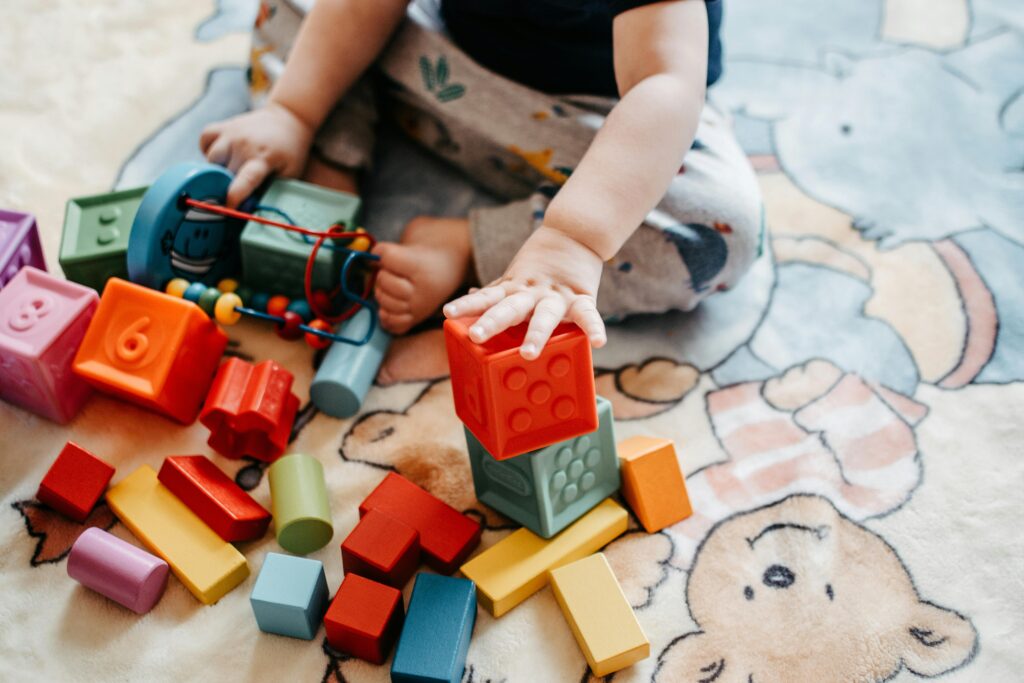
Baby play isn’t just adorable. It’s essential. It helps build motor skills, social connections, emotional security, and cognitive strength — all through simple acts like reaching, rolling, or tracking a colorful object.
In this in-depth guide, we’ll explore the importance of baby play, how play mats and gyms support your little one’s growth, and which products stand out as parent-approved favorites. Whether you’re a first-time parent or looking to upgrade your baby’s setup, this guide will help you make informed choices that encourage joyful, meaningful play.
Why Play Matters: Understanding Baby Development Through Play
Play is how babies learn. Unlike older kids or adults who gain knowledge through structured lessons, babies learn by experiencing — touching, hearing, seeing, and moving.
From as early as birth, babies begin exploring their world using their senses. Their muscles begin to activate, their eyes track light and contrast, and their ears pick up sounds. These are the earliest forms of learning — and they all happen through play.
Key Developmental Areas Boosted by Play:
- Gross motor skills: Rolling, tummy time, sitting up, crawling — these are all built through floor play and movement.
- Fine motor skills: Reaching for toys, grasping rattles, pressing buttons.
- Cognitive development: Cause and effect, visual tracking, sound association.
- Sensory integration: Exploring textures, colors, sounds, and movements.
- Social-emotional learning: Smiling at a caregiver, cooing during play, reacting to praise.
By creating an environment where your baby can safely explore, we nurture all these essential skills. That’s where play mats and baby gyms come in.
Creating a Safe and Stimulating Play Space
The first thing every parent needs to encourage play is a safe spot. Babies spend a lot of time on the floor — especially during their early months. That’s why a well-designed play mat is more than just baby gear — it becomes a foundational tool in their growth journey.
Let’s look at how a good mat and gym setup supports your baby’s daily play routine.
Benefits of Baby Play Mats:
- Comfort: Cushioned surface for tummy time, rolling, crawling, and sitting.
- Safety: Prevents bumps and bruises on hard floors.
- Clean zone: Keeps baby off dust, allergens, or cold tiles.
- Sensory stimulation: Bright patterns, different textures, or interactive elements.
- Parent-friendly: Gives you peace of mind while baby explores independently.
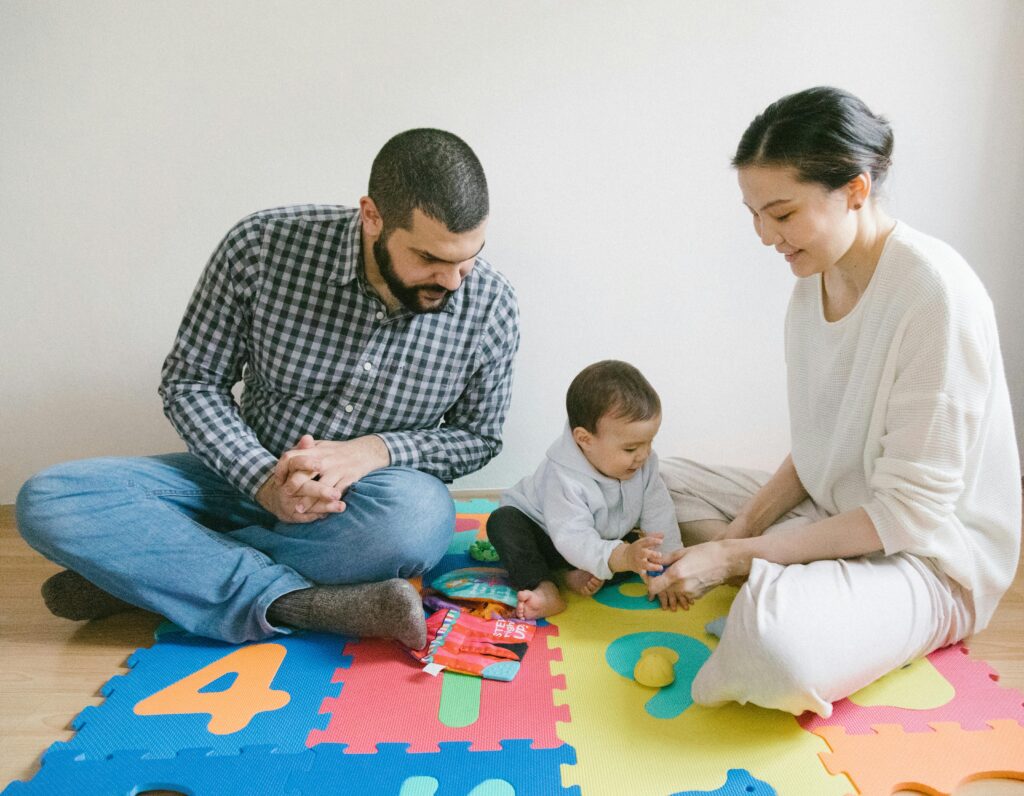
Our Picks:
- Totter + Tumble Play Mat on Amazon – Elegant design, soft cushioning, and easy to clean.
- Tiny Love Meadow Days Super Play Mat on Amazon – Great for tummy time with built-in interactive elements.
- House of Noa Little Nomad Mat on Amazon – Stylish, non-toxic tiles that blend beautifully with home décor.
Need an eco-conscious choice? See our guide to Top 10 Eco-Friendly Baby Diaper Brands in India, and stay tuned for an upcoming list of non-toxic play mats.
Introducing Baby Play Gyms: Why They’re a Game-Changer
Play gyms are a natural extension of floor play. Usually featuring hanging toys, mirrors, textures, and sometimes sound, they invite babies to explore vertically — reaching, batting, or tracking movement.
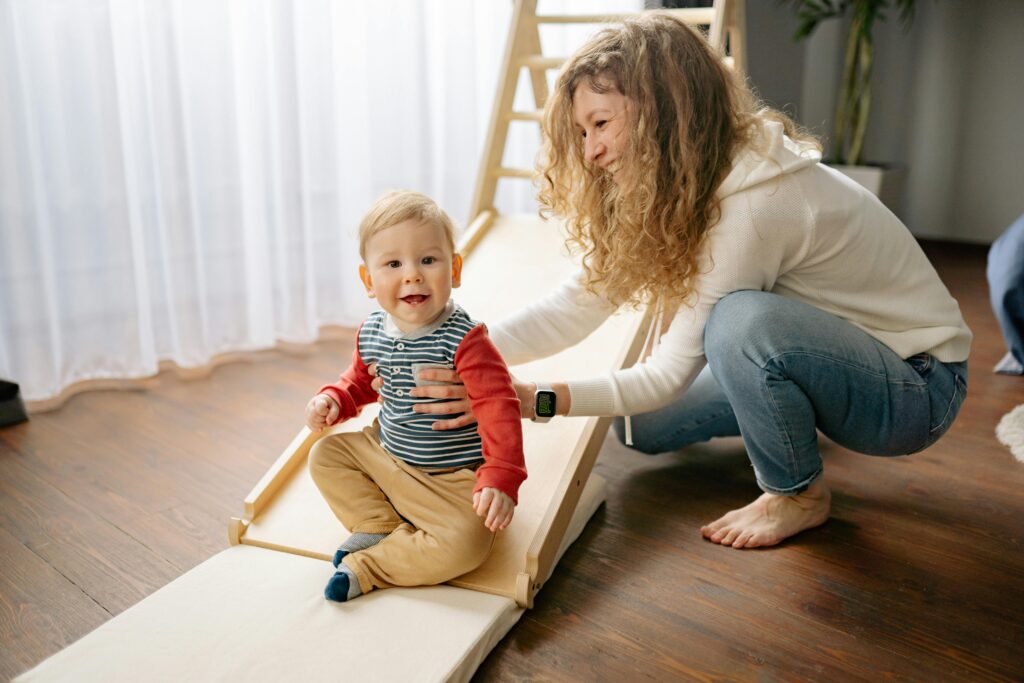
What Makes a Good Play Gym?
- Age-appropriate stimulation: High-contrast visuals for younger babies, interactive toys for older infants.
- Multi-sensory features: Sound, texture, movement, and mirrors.
- Growth adaptability: Gyms that transition into toddler tents or reading nooks last longer.
- Safety and materials: BPA-free, phthalate-free, and easy to clean.
Popular Options Loved by Parents:
- Lovevery The Play Gym on Amazon – Montessori-inspired design that grows with baby from day one to toddlerhood.
- Baby Einstein 4-in-1 Kickin’ Tunes Gym on Amazon – Budget-friendly and musical, great for sensory development.
- LALO The Play Gym on Amazon – Sleek and neutral, includes accessories for milestone stages.
Tummy Time: Why It’s Essential and How to Make It Fun
You’ve probably heard your pediatrician mention “tummy time” more than once. It’s not just a suggestion — it’s a developmental necessity. Tummy time strengthens your baby’s neck, shoulders, arms, and back, helping prepare them for crawling, sitting, and eventually walking.
Tips to Encourage Tummy Time:
- Start small: Just 2–3 minutes after diaper changes.
- Use a play mat with contrasting patterns to engage interest.
- Place a mirror or toy just out of reach to encourage lifting and reaching.
- Lay down next to them — your face is their favorite thing!
Even reluctant babies eventually warm up to it, especially with a fun, interactive mat under them.
How to Set Up an Ideal Baby Play Zone at Home
Creating a safe and engaging play area doesn’t require a big budget or extra room. Whether you live in a studio apartment or a multi-bedroom home, a designated corner with a play mat and a few essentials can do wonders.
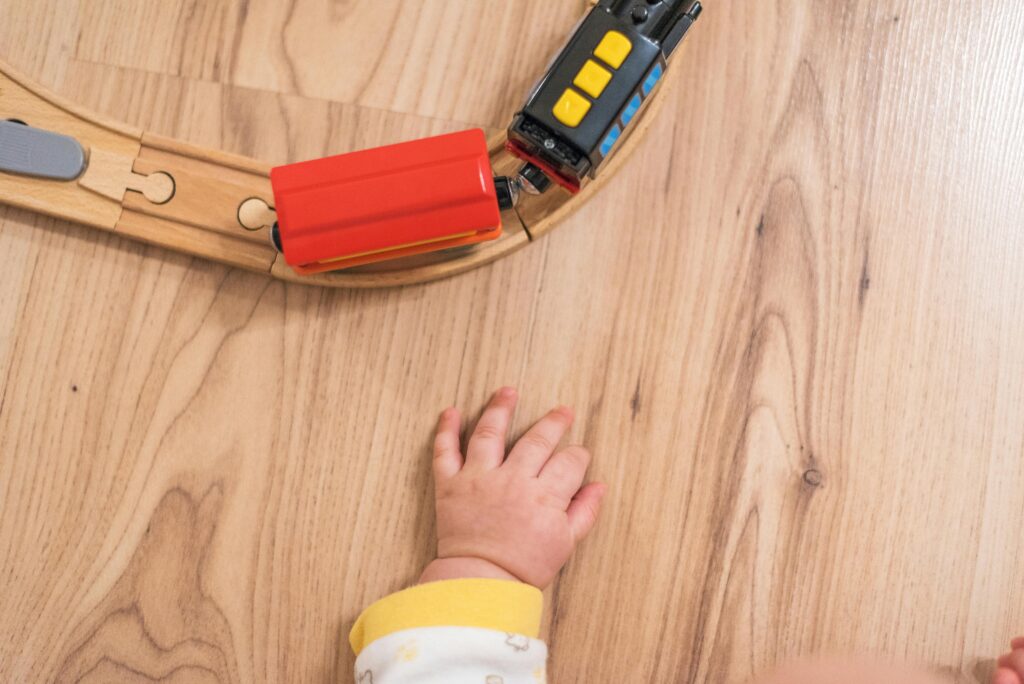
Essentials for Your Baby Play Area:
- A soft baby mat that’s large enough for movement.
- A versatile baby gym or arch with attachable toys.
- Soft toys, rattles, and teethers within reach.
- Natural light and a distraction-free space.
- Storage basket or fabric bins to keep things tidy.
Pro Tip: Rotate toys weekly to maintain novelty without overwhelming your baby. Reintroducing old toys after a break can renew their interest!
Daily Playtime Routine: How Much Is Enough?
There’s no one-size-fits-all answer, but here are some rough guidelines based on age:
| Baby Age | Daily Playtime | Tips |
|---|---|---|
| 0–2 months | 20–30 mins | Focus on visual tracking and tummy time |
| 3–4 months | 45–60 mins | Introduce toys, rattles, mirror play |
| 5–6 months | 1–2 hours | Add sitting support, more floor freedom |
| 6–12 months | 2–3 hours | Crawling, sensory toys, independent play |
Remember: these don’t have to be continuous sessions. Spread them across the day between naps, feeding, and cuddles.
Frequently Asked Questions About Baby Play
1. When should I start using a play mat?
From day one. Even newborns benefit from soft, clean surfaces for supervised time on their backs or tummies.
2. Are baby gyms safe for young infants?
Yes, as long as they’re age-appropriate and the baby is supervised. Avoid toys with small detachable parts.
3. Can I use a yoga mat instead of a play mat?
Technically yes, but yoga mats can be slippery or thin. Baby play mats are designed to cushion, absorb shock, and include sensory stimulation.
4. How do I clean play mats and gyms?
Most foam or vinyl mats can be wiped with baby-safe disinfectant. Fabric gyms often have machine-washable parts — check the label!
5. My baby seems bored. Should I buy more toys?
Not necessarily. Sometimes all they need is interaction — a parent making silly faces, a mirror, or music. Try rotating existing toys instead of buying new ones constantly.
Building Connection Through Play
One of the most beautiful parts of baby play is how it builds connection. When you lay down on the mat with your baby, talk to them, mirror their actions, or laugh together, you’re doing more than keeping them entertained — you’re bonding. These moments lay the foundation for emotional development and secure attachment.
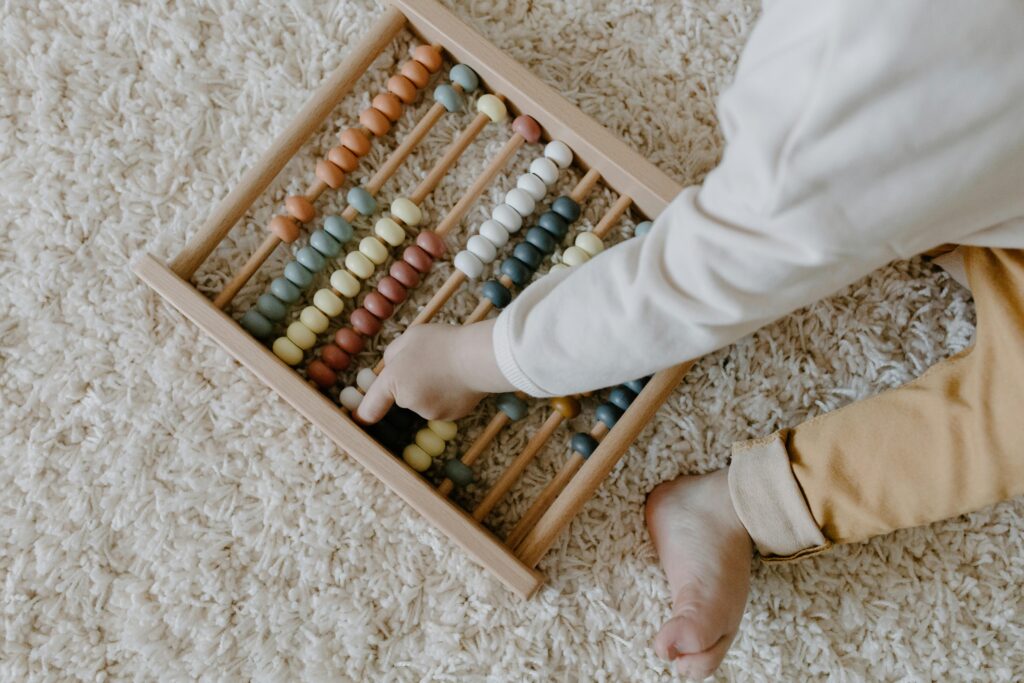
Simple activities like peekaboo, rolling a ball back and forth, or mimicking their coos strengthen both your baby’s brain and your relationship.
Growing With Your Baby: What Comes Next?
As your baby grows into toddlerhood, the play evolves. From structured floor time, you’ll start introducing stacking toys, musical instruments, books, and puzzles. But the early habits of independent floor play — built on a comfortable mat and gym — set the stage for that next chapter.
Your baby will have already learned how to entertain themselves, explore safely, and trust the world around them. And you’ll have developed your own rhythm as a parent — observing, supporting, and celebrating milestones, one giggle at a time.
Final Thoughts: The Power of Simple Play
In a world full of flashy baby gadgets and “must-have” lists, it’s easy to feel overwhelmed. But here’s the truth: babies don’t need much to thrive. A safe space, a soft mat, a few sensory toys, and your love are more than enough.
Cherish those quiet moments on the floor. Join your baby in their world. Watch them discover their hands, roll for the first time, or laugh at their own reflection. These aren’t just memories — they’re the building blocks of a confident, curious child.
If you’re looking to begin or upgrade your setup, start with a quality baby play mat and a versatile play gym — ones that fit your lifestyle and make you smile too.
And don’t forget to explore our other parenting blog posts, including the Top 10 Eco-Friendly Baby Diaper Brands in India.
Disclaimer:
Babyblissful.in shares general parenting insights and product recommendations. Some links on our site may lead to products or services from which we may earn a small commission if you make a purchase, at no extra cost to you. Product prices and availability are subject to change on the retailer’s website. Always consult a healthcare professional for medical advice.